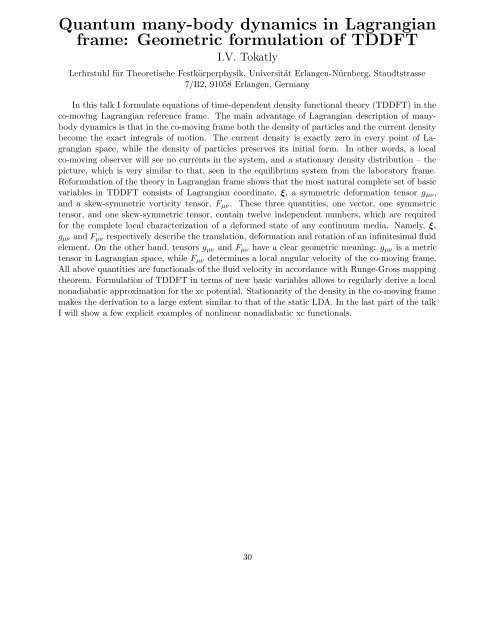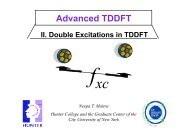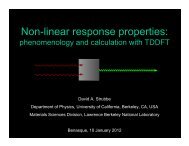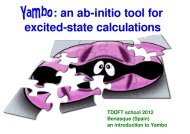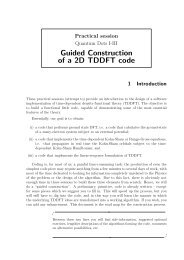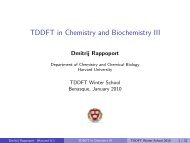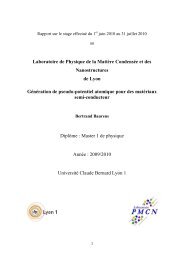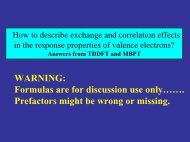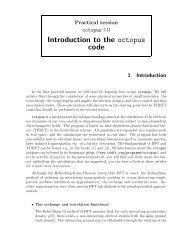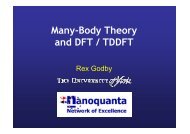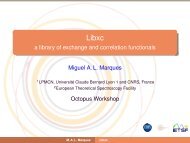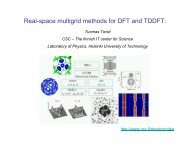TIME DEPENDENT DENSITY FUNCTIONAL THEORY ... - TDDFT.org
TIME DEPENDENT DENSITY FUNCTIONAL THEORY ... - TDDFT.org
TIME DEPENDENT DENSITY FUNCTIONAL THEORY ... - TDDFT.org
- No tags were found...
Create successful ePaper yourself
Turn your PDF publications into a flip-book with our unique Google optimized e-Paper software.
Quantum many-body dynamics in Lagrangian<br />
frame: Geometric formulation of <strong>TDDFT</strong><br />
I.V. Tokatly<br />
Lerhrstuhl für Theoretische Festkörperphysik, Universität Erlangen-Nürnberg, Staudtstrasse<br />
7/B2, 91058 Erlangen, Germany<br />
In this talk I formulate equations of time-dependent density functional theory (<strong>TDDFT</strong>) in the<br />
co-moving Lagrangian reference frame. The main advantage of Lagrangian description of manybody<br />
dynamics is that in the co-moving frame both the density of particles and the current density<br />
become the exact integrals of motion. The current density is exactly zero in every point of Lagrangian<br />
space, while the density of particles preserves its initial form. In other words, a local<br />
co-moving observer will see no currents in the system, and a stationary density distribution – the<br />
picture, which is very similar to that, seen in the equilibrium system from the laboratory frame.<br />
Reformulation of the theory in Lagrangian frame shows that the most natural complete set of basic<br />
variables in <strong>TDDFT</strong> consists of Lagrangian coordinate, ξ, a symmetric deformation tensor g µν ,<br />
and a skew-symmetric vorticity tensor, F µν . These three quantities, one vector, one symmetric<br />
tensor, and one skew-symmetric tensor, contain twelve independent numbers, which are required<br />
for the complete local characterization of a deformed state of any continuum media. Namely, ξ,<br />
g µν and F µν respectively describe the translation, deformation and rotation of an infinitesimal fluid<br />
element. On the other hand, tensors g µν and F µν have a clear geometric meaning: g µν is a metric<br />
tensor in Lagrangian space, while F µν determines a local angular velocity of the co-moving frame.<br />
All above quantities are functionals of the fluid velocity in accordance with Runge-Gross mapping<br />
theorem. Formulation of <strong>TDDFT</strong> in terms of new basic variables allows to regularly derive a local<br />
nonadiabatic approximation for the xc potential. Stationarity of the density in the co-moving frame<br />
makes the derivation to a large extent similar to that of the static LDA. In the last part of the talk<br />
I will show a few explicit examples of nonlinear nonadiabatic xc functionals.<br />
30


